The final top 10 jazz saxophone players ever through 100 songs.
Charlie Parker, John Coltrane, Sonny Rollins, Coleman Hawkins, Stan Getz…
1. Charlie Parker
Charlie Parker, born in 1920 in Kansas City, Missouri, is hailed as one of the most influential and groundbreaking saxophonists in the history of jazz. Known as “Bird”, Parker revolutionized the world of jazz with his virtuosic alto saxophone playing and innovative approach to improvisation.
Parker’s career took off in the 1940´s, when he became a leading figure in the development of bebop, a new style of jazz characterized by fast tempos, intricate melodies, and complex harmonies. His remarkable speed, agility, and melodic invention on the saxophone set him apart, and his recordings, such as “Ko-Ko” and “Ornithology”, became jazz classics.
Despite his undeniable musical genius, Parker struggled with personal demons, including substance abuse, which ultimately impacted his health and led to his untimely death in 1955 at the age of 34. However, his legacy as a trailblazer in jazz lives on, and his impact on the genre is immeasurable.
Charlie Parker’s contributions to jazz extended far beyond his technical brilliance. He expanded the possibilities of improvisation, influenced countless musicians, and left an indelible mark on the art form. His enduring compositions and recordings continue to captivate audiences, ensuring that his legacy as one of the greatest saxophonists in jazz history remains intact.


Curiosities about Charlie:
- Bird’s “Chicken” Inspiration: Parker was known for his love of food, and one of his favorite dishes was fried chicken. Legend has it that he once mentioned that the sound of a chicken clucking influenced his unique bebop phrasing and rhythmic patterns. This amusing connection between his music and poultry adds a touch of whimsy to his creative process.
- Bird’s Saxophone Mishap: Parker had a reputation for being absent-minded at times. In one particular incident, he absentmindedly left his saxophone on top of a cab after a late-night gig. Realizing his mistake, he immediately chased after the cab on foot, eventually catching up to it and retrieving his beloved instrument. This anecdote highlights his dedication to his craft and the lengths he would go to protect his saxophone.
- The Jam Session “Password”: Parker was known to frequent after-hours jam sessions, where musicians would gather to play and experiment freely. In order to gain access to these exclusive sessions, attendees would sometimes be required to know a secret “password” or a particular musical phrase. This added an element of playfulness and camaraderie among musicians, further showcasing Parker’s involvement in the jazz community.
Charlie through his songs:
Now it´s time to know more about his music. There´s a short Spotify list with complete songs played by Charlie Parker.
2. John Coltrane
John Coltrane, born in 1926 in Hamlet, North Carolina, is revered as one of the most influential and innovative saxophonists in the history of jazz. He began his career playing alto saxophone but later gained widespread recognition for his virtuosic mastery of the tenor and soprano saxophones.
Coltrane’s musical journey took him through various pivotal phases, each marked by profound artistic growth. In the 1950s, he played a key role in the legendary Miles Davis Quintet, where his adventurous improvisations and harmonic explorations helped redefine the boundaries of jazz.
It was during the 1960s that Coltrane’s music reached its zenith, marked by his relentless pursuit of spiritual and musical enlightenment. His landmark albums, such as “Giant Steps”, “A Love Supreme” and “Ascension”, showcased his innovative use of modal harmony and extended improvisations. Coltrane’s playing exhibited unparalleled intensity, technical prowess, and an ability to convey raw emotion through his instrument.
Sadly, Coltrane’s life was tragically cut short when he passed away in 1967 at the age of 40 due to liver cancer. However, his profound impact on jazz and his quest for musical innovation continues to inspire musicians and audiences alike. John Coltrane’s legacy as a visionary saxophonist and his contributions to pushing the boundaries of jazz make him an enduring figure in the history of music.


Curiosities about John:
- Coltrane’s Love for Puzzles: Offstage, Coltrane had a passion for solving jigsaw puzzles. He found the activity both relaxing and intellectually stimulating. It was not uncommon to find him immersed in solving puzzles during his downtime.
- Coltrane’s Affection for Cats: Coltrane had a soft spot for cats and was known to be a cat lover. He often had feline companions, and it is said that he found their presence comforting and soothing. There are even stories of him being photographed with his beloved cats.
- Coltrane’s Unique Sense of Style: Coltrane had his own distinct fashion sense, often sporting stylish hats and sharp suits. He had a penchant for looking sharp both on and off the stage, adding a touch of elegance to his already charismatic persona.
- Coltrane’s Sense of Humor: While Coltrane was typically perceived as a serious and deeply introspective musician, he did possess a sense of humor. In informal settings and interactions with his fellow musicians, he would often engage in playful banter and humorous exchanges.
John through his songs:
Now it’s time to know more about his music. There’s a short Spotify list with complete songs played by John Coltrane.
3. Sonny Rollins
Walter Theodore Sonny Rollins is an iconic saxophonist and composer whose virtuosity and innovative improvisational style have left an indelible mark on the world of jazz. Born in 1930 in New York City, Rollins began playing the alto saxophone at a young age before switching to the tenor saxophone, which would become his signature instrument.
Rollins first gained recognition in the 1950s as a member of bands led by legendary musicians such as Miles Davis and Thelonious Monk. It was during this time that he developed his distinctive sound, characterized by a powerful tone, expressive phrasing, and a unique ability to weave complex musical ideas into his improvisations.
In the 1960s, Rollins embarked on a period of self-imposed exile from the jazz scene, during which he famously practiced on the Williamsburg Bridge in New York City to refine his craft. This hiatus allowed him to further develop his musical voice, and upon his return, he released a series of groundbreaking albums that showcased his mastery of the saxophone and his innovative approach to improvisation.
Throughout his career, Sonny Rollins has received numerous accolades, including multiple Grammy Awards and inductions into the DownBeat Jazz Hall of Fame and the National Endowment for the Arts Jazz Masters. His compositions, such as “St. Thomas” and “Oleo”, have become jazz standards and are frequently performed by musicians around the world.
Now in his 90s, Rollins has cemented his status as one of the greatest saxophonists in jazz history. His contributions to the genre, marked by his technical brilliance, melodic inventiveness, and adventurous spirit, have inspired countless musicians and continue to captivate audiences to this day. Sonny Rollins remains an enduring figure and a true legend of jazz.
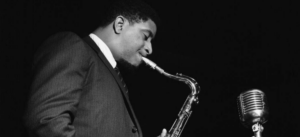
Curiosities about Sonny:
- Sonny Rollins’ “Bridge” Practice: During his self-imposed hiatus from the jazz scene in the 1960s, Rollins would often practice his saxophone on the Williamsburg Bridge in New York City. This unconventional choice of location, with its echoing acoustics, was a result of Rollins seeking a secluded place to work on his music and escape distractions.
- Sonny Rollins and the Stolen Saxophone: In 1956, Rollins took a sabbatical from his career and temporarily retired. He sold his tenor saxophone and bought a used Volkswagen Beetle with the intention of studying music intensively. However, shortly after, his car was stolen, along with the saxophone. This incident led to a period of deep introspection for Rollins and his subsequent return to the jazz scene.
- Sonny Rollins’ Sense of Humor: While known for his seriousness and dedication to his craft, Rollins also possessed a playful sense of humor. In interviews and conversations, he often shared witty anecdotes and engaged in humorous banter with fellow musicians, showcasing his lighter side alongside his musical brilliance.
- Sonny Rollins’ Love for Cartoon Characters: Rollins has expressed a fondness for animated characters such as Popeye and Bugs Bunny. In fact, he once recorded an album titled “The Standard Sonny Rollins” where the cover featured him alongside cartoon characters like Yosemite Sam and Daffy Duck.
Sonny through his songs:
Now it’s time to know more about his music. There’s a short Spotify list with complete songs played by Sonny Rollins.
4. Coleman Hawkins
Coleman Hawkins, born in 1904 in St. Joseph, Missouri, is recognized as one of the pioneering figures of jazz and a master of the tenor saxophone. Often referred to as “Hawk”. Hawkins helped establish the saxophone as a prominent solo instrument in jazz during the early 20th century.
Hawkins rose to prominence in the 1920s and 1930s, gaining fame as a member of Fletcher Henderson’s orchestra, where he showcased his virtuosic playing and powerful sound. His groundbreaking recording of “Body and Soul” in 1939 remains a landmark in jazz history, highlighting his innovative approach to improvisation and harmonic exploration.
Known for his warm and rich tone, Hawkins combined elements of blues, swing, and classical music in his playing. He was a master of melodic invention, rhythmic phrasing, and technical dexterity, which captivated audiences and influenced generations of saxophonists to come.
Throughout his career, Hawkins collaborated with numerous jazz luminaries, including Duke Ellington, Thelonious Monk, and Benny Goodman. His contributions to the development of jazz and the tenor saxophone are immeasurable, and his impact on the genre is felt to this day.
Coleman Hawkins’ legacy as one of the jazz greats endures through his extensive discography, his innovation in improvisation, and his influence on subsequent generations of saxophonists. His pioneering spirit and musical brilliance have solidified his place as a true legend in the history of jazz.
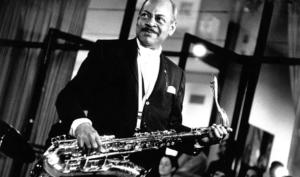

Curiosities about Coleman:
- The “Bean” Nickname: Hawkins earned the nickname “Bean” early in his career due to an incident involving a waiter who mistakenly served him a plate of baked beans instead of the steak he had ordered. The nickname stuck with him throughout his life, and he was often referred to as “Bean” by his fellow musicians.
- Hawkins’ Hat Collection: Hawkins had a distinctive sense of style and was known for his love of hats. He had a vast collection of stylish hats, including fedoras, bowler hats, and berets. His hats became part of his personal brand and added to his charismatic stage presence.
- Hawkins’ Love for Practical Jokes: Hawkins had a mischievous side and enjoyed playing practical jokes on his fellow musicians. He would often prank his bandmates during rehearsals and performances, adding an element of humor to the music-making process.
- The “Stolen” Saxophone: In a playful exchange with fellow saxophonist Benny Carter, Hawkins once “stole” Carter’s saxophone during a gig and started playing it onstage. The unexpected switch-up surprised the audience and created a memorable and humorous moment.
Coleman through his songs:
Now it’s time to know more about his music. There’s a short Spotify list with complete songs played by Coleman Hawkins.
5. Stan Getz
Stan Getz, born in 1927 in Philadelphia, Pennsylvania, was a legendary American jazz saxophonist known for his warm and lyrical sound on the tenor saxophone. Often referred to as “The Sound,” Getz played with a smooth and melodic style that captivated audiences worldwide.
Getz rose to prominence in the 1950s as a leading figure in the cool jazz movement. His collaboration with the iconic pianist and composer, João Gilberto, in the early 1960s resulted in the groundbreaking album “Getz/Gilberto”, which featured the timeless hit “The Girl from Ipanema”. This album brought Brazilian bossa nova to the forefront of the jazz world and solidified Getz’s international fame.
Throughout his career, Getz showcased remarkable versatility, effortlessly navigating between various jazz styles, including swing, bebop, and Latin jazz. He collaborated with numerous jazz luminaries, including Oscar Peterson, Bill Evans, and Chick Corea, leaving his mark on countless recordings.
Despite personal struggles with substance abuse, Getz continued to produce exceptional music, earning critical acclaim and multiple Grammy Awards. His sensitivity and emotional depth, combined with his technical prowess and exquisite tone, established him as one of the most influential saxophonists of all time.
Stan Getz’s legacy as a master of the tenor saxophone endures through his iconic recordings and his significant influence on subsequent generations of jazz musicians. His soulful sound and unwavering commitment to musical expression continue to inspire and captivate listeners around the world.
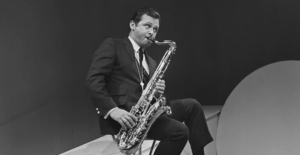

Curiosities about Stan:
- Stan Getz’s Love for Ice Cream: Getz had a well-known fondness for ice cream and would often indulge in it during his tours and travels. It is said that he would sometimes request to be driven to the nearest ice cream parlor after a performance to satisfy his sweet tooth.
- Getz’s Sense of Humor: Getz had a dry and witty sense of humor. He was known to crack jokes and engage in playful banter with his bandmates during rehearsals and performances, adding a touch of levity to the music-making process.
- Stan Getz and the “Saxophone Slim”: Getz was once involved in an amusing incident during a recording session. He accidentally grabbed a saxophone that resembled his own, but it turned out to be slightly smaller in size. Unfazed, Getz went ahead and recorded the entire session with the smaller instrument, earning him the temporary nickname “Saxophone Slim” among his colleagues.
- Getz’s “Apology” to Charlie Parker: As a young musician, Getz once had the opportunity to play with the legendary saxophonist Charlie Parker. However, due to nervousness, he made a few mistakes during the performance. In an endearing gesture, Getz later sent Parker a letter apologizing for his shortcomings and expressing his admiration for him. Parker graciously accepted the apology, recognizing Getz’s talent and potential.
Stan through his songs:
Now it’s time to know more about his music. There’s a short Spotify list with complete songs played by Stan Getz.
6. Joe Henderson
Joe Henderson, born in 1937 in Lima, Ohio, was an influential American jazz saxophonist known for his distinctive sound and improvisational prowess. Renowned for his mastery of the tenor saxophone, Henderson left an indelible mark on the jazz landscape with his inventive approach and rich musical vocabulary.
Henderson’s career took off in the 1960s when he became a member of the iconic Blue Note Records roster. His recordings during this period, such as “Page One” and “Mode for Joe”, showcased his unique blend of hard bop and modal jazz, solidifying his reputation as a leading figure in the genre.
Known for his ability to infuse emotion and storytelling into his playing, Henderson’s solos were characterized by their inventive melodic lines, rhythmic complexity, and harmonic sophistication. He effortlessly combined a deep understanding of jazz tradition with a forward-thinking approach, pushing the boundaries of the genre.
Throughout his prolific career, Henderson collaborated with numerous jazz greats, including Herbie Hancock, McCoy Tyner, and Chick Corea. His versatility allowed him to excel in various jazz styles, ranging from hard bop to post-bop and fusion.
Joe Henderson’s contribution to jazz is immense, as he left behind a vast discography and an enduring legacy. His expressive playing, technical brilliance, and adventurous spirit continue to inspire generations of saxophonists and jazz enthusiasts alike. Henderson’s impact on the evolution of jazz and his status as a virtuoso musician solidify his place among the greats of the genre.
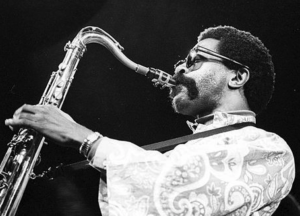

Curiosities about Joe:
- The Not-So-Secret Snack Stash: Henderson had a reputation for having a hidden stash of snacks in his saxophone case. Musicians who shared the stage with him would often tease him about it, jokingly referring to his case as the “Snackophone.” It seems that Henderson enjoyed having a little something to munch on during breaks or rehearsals.
- Henderson’s “Saxophone Philosophy”: Henderson was known to have a unique philosophy when it came to his saxophone playing. He once humorously remarked, “If you can’t sing it, don’t play it.” This statement highlights his belief in the importance of melodic improvisation and the idea that every note played on the saxophone should have a clear musical intention.
- The “Mistaken Identity” Incident: On one occasion, while on tour, Henderson was mistaken for another jazz musician by an enthusiastic fan. The fan approached him and excitedly asked for his autograph, thinking he was a different saxophonist. Henderson graciously signed the autograph anyway, playing along with the mistaken identity and bringing a smile to the fan’s face.
- Henderson’s Love for Bad Jokes: Henderson was known for his love of telling bad jokes. He would often lighten the mood during rehearsals or gatherings by sharing a cheesy joke or a pun. His bandmates and fellow musicians would humorously groan at his jokes, but they appreciated his effort to bring laughter and camaraderie to the group.
Joe through his songs:
Now it’s time to know more about his music. There’s a short Spotify list with complete songs played by Joe Henderson.
7. Ornette Coleman
Ornette Coleman, born in 1930 in Fort Worth, Texas, was a groundbreaking American jazz saxophonist, composer, and bandleader. Widely regarded as one of the most influential figures in the history of jazz, Coleman revolutionized the genre with his avant-garde approach and rejection of traditional musical conventions.
Coleman’s career gained momentum in the late 1950s and early 1960s when he released albums such as “The Shape of Jazz to Come” and “Free Jazz: A Collective Improvisation.” These albums, characterized by their free-form improvisation, lack of predetermined chord progressions, and emphasis on collective creativity, challenged the established norms of jazz at the time.
Known for his distinctively expressive and emotive saxophone playing, Coleman introduced a new language of improvisation that prioritized personal expression and interaction among musicians. His music, often described as “free jazz”, embraced spontaneity, individuality, and a sense of collective exploration.
Throughout his career, Coleman led various innovative ensembles and collaborated with musicians from different genres, pushing the boundaries of jazz and breaking new ground. His compositions, such as “Lonely Woman” and “Peace”, have become jazz standards, further solidifying his impact on the genre.
Ornette Coleman’s audacious musical vision and fearless experimentation challenged the status quo, leaving an indelible mark on the evolution of jazz. His contributions to the art form continue to inspire and influence musicians, transcending genres and pushing the boundaries of what is possible in music.
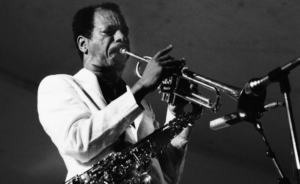

Curiosities about Ornette:
- Coleman’s Unique Instrument Case: Coleman had a rather unusual way of carrying his saxophone around. Instead of a traditional instrument case, he would often use a baby stroller to transport his saxophone. This distinctive sight amused and puzzled many people who saw him on the streets with his saxophone securely nestled in the stroller.
- The “Mingus Vs. Coleman” Basketball Game: In a humorous and friendly rivalry, Coleman and fellow jazz musician Charles Mingus engaged in a basketball match during a break from a recording session. Mingus, known for his towering height, thought his height advantage would give him the upper hand, but Coleman’s agility and quick moves surprised Mingus, leading to a comical and spirited game.
- Coleman’s Unique Fashion Sense: Coleman had a distinctive and unconventional sense of fashion. He was often seen wearing brightly colored suits, eccentric hats, and even occasionally donning mismatched socks. His eclectic style reflected his individuality and artistic spirit, drawing attention and raising eyebrows in the jazz community.
- The “Harmolodic” Coinage: Coleman was known for developing his unique musical theory called “Harmolodics,” which aimed to break down traditional harmonic and rhythmic structures in favor of a more holistic approach to music. The term itself, “Harmolodics,” has a playful and almost whimsical quality to it, reflecting Coleman’s innovative and imaginative approach to music.
Ornette through his songs:
Now it’s time to know more about his music. There’s a short Spotify list with complete songs played by Ornette Coleman.
8. Dexter Gordon
Dexter Gordon, born in 1923 in Los Angeles, California, was a legendary American jazz saxophonist known for his distinctive and soulful sound on the tenor saxophone. With his commanding presence, lyrical improvisation, and ability to tell compelling musical stories, Gordon left an indelible mark on the jazz world.
Gordon’s career flourished during the bebop and hard bop eras of the 1940s and 1950s. He honed his craft alongside notable musicians such as Charlie Parker and Dizzy Gillespie, developing a style characterized by a robust tone, sophisticated phrasing, and extended melodic lines.
After spending much of the 1960s living in Europe, Gordon made a triumphant return to the United States in the 1970s. His recordings during this period, such as “Homecoming: Live at the Village Vanguard” and “Sophisticated Giant”, showcased his maturity as an artist and reaffirmed his status as a jazz titan.
Known for his charismatic stage presence and towering stature, Gordon earned the nickname “Long Tall Dexter”. His warm and expressive playing resonated deeply with audiences, while his larger-than-life personality and sense of humor endeared him to fellow musicians and fans alike.
Dexter Gordon’s musical legacy extends beyond his own recordings. He also made a significant impact on the silver screen, notably with his portrayal of Dale Turner in the film “Round Midnight”, for which he received an Academy Award nomination. His contributions to jazz, both as a performer and an ambassador of the genre, solidify his place among the greatest saxophonists in history.
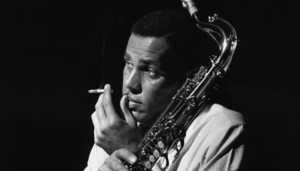

Curiosities about Dexter:
- Gordon’s Hat Collection: Dexter Gordon had a penchant for stylish hats and was often seen sporting a variety of fedoras, berets, and other headwear. His hat collection became somewhat of a signature style, adding an extra touch of elegance to his stage presence.
- The “Saxophone Duel” with Gene Ammons: During a live performance, Gordon engaged in a friendly saxophone battle with fellow tenor saxophonist Gene Ammons. The two musicians playfully challenged each other’s skills, taking turns to showcase their improvisational prowess. This good-natured competition delighted the audience and demonstrated the camaraderie and mutual respect between the two musicians.
- Gordon’s “Musical Conversation” with Audience Members: Dexter Gordon had a unique way of interacting with his audience during live performances. In between songs, he would engage in playful banter and engage in a “musical conversation” with individual audience members, responding to their applause or comments with witty musical replies from his saxophone. This spontaneous and interactive approach added a touch of humor and personal connection to his performances.
- Gordon’s Love for Late-Night Jam Sessions: Dexter Gordon was known for his love of late-night jam sessions. After his regular performances, he would often seek out local jazz clubs or impromptu gatherings to continue playing and jamming with fellow musicians into the early hours of the morning. These informal sessions provided opportunities for musical exploration and camaraderie, creating memorable moments and unexpected collaborations.
Dexter through his songs:
Now it´s time to know more about his music. There´s a short Spotify list with complete songs played by Dexter Gordon.
9. Michael Brecker
Michael Brecker, born in 1949 in Philadelphia, Pennsylvania, was a highly influential and virtuosic American jazz saxophonist. Renowned for his unparalleled technical abilities and inventive improvisational skills, Brecker made a significant impact on the world of jazz and beyond.
Brecker began his professional career in the 1970s, initially gaining recognition for his work as a member of the jazz-rock fusion group, The Brecker Brothers, alongside his brother, trumpeter Randy Brecker. As a solo artist, he released numerous acclaimed albums, including “Don’t Try This at Home” and “Time Is of the Essence”, which showcased his versatility and mastery of various styles.
Known for his commanding presence on the tenor saxophone, Brecker possessed a powerful and expressive sound. His improvisations were marked by their complex melodic lines, harmonic sophistication, and rhythmic agility, earning him widespread admiration among musicians and fans alike.
Throughout his career, Brecker collaborated with a diverse range of artists, transcending genres and pushing musical boundaries. He worked with jazz luminaries such as Herbie Hancock, McCoy Tyner, and Pat Metheny, as well as pop icons like Paul Simon and James Taylor. His contributions extended beyond jazz, as he played a vital role in shaping the sound of contemporary music through his dynamic and versatile playing.
Michael Brecker’s impact on the saxophone and jazz cannot be overstated. He received numerous accolades, including 15 Grammy Awards, and his innovative approach continues to inspire generations of musicians. Sadly, Brecker passed away in 2007, but his legacy as one of the greatest saxophonists of all time lives on through his recordings and the enduring influence of his music.
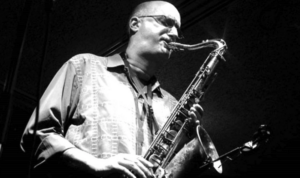

Curiosities about Michael:
- Brecker’s Love for Sneakers: Michael Brecker had a passion for collecting sneakers. He was often seen sporting colorful and stylish sneakers both on and off stage. His love for sneakers became somewhat of a trademark, and he enjoyed discussing his latest additions to his collection with fellow musicians and fans.
- The “Saxophone Marathon”: On one occasion, Brecker found himself in a friendly competition with another saxophonist during a late-night jam session. The challenge was to see who could play the longest continuous saxophone solo without taking a break. Brecker and his fellow musician engaged in an epic “saxophone marathon,” pushing their endurance and creativity to the limit, while delighting the audience with their playful determination.
- Brecker’s “Musical Jokes”: Michael Brecker had a playful sense of humor and enjoyed injecting musical jokes into his performances. He would sometimes insert snippets of well-known tunes or unexpected musical quotes into his solos, surprising both the audience and his fellow musicians. These musical inside jokes added an element of fun and spontaneity to his performances.
- The “Saxophone and Skiing” Connection: Brecker had a passion for skiing and often found inspiration for his music in the mountains. He once remarked that he experienced a similar feeling of freedom and exhilaration when playing the saxophone as he did when skiing down a snowy slope. This unique connection between his love for music and skiing brought a sense of joy and adventure to his life.
Michael through his songs:
Now it´s time to know more about his music. There´s a short Spotify list with complete songs played by Michael Brecker.
10. Wayne Shorter
Wayne Shorter, born in 1933 in Newark, New Jersey, is an iconic American jazz saxophonist and composer. Renowned for his innovative approach to improvisation, lyrical style, and imaginative compositions, Shorter has left an indelible mark on the world of jazz.
Shorter rose to prominence in the 1960s as a member of the legendary Miles Davis Quintet, where he played alongside jazz greats such as Herbie Hancock, Ron Carter, and Tony Williams. His contributions to the group’s groundbreaking albums, including “E.S.P.” and “Miles Smiles”, showcased his unique voice on the tenor and soprano saxophones and his ability to weave intricate melodies.
As a composer, Shorter is celebrated for his complex and harmonically rich compositions. His compositions, such as “Footprints” and “Juju”, have become jazz standards, renowned for their adventurous structures and captivating melodies. His innovative compositions continue to be explored and interpreted by musicians across generations.
Throughout his career, Shorter has led his own ensembles, including the celebrated Wayne Shorter Quartet. With this group, he has continued to push the boundaries of jazz, blending various styles, incorporating elements of fusion and world music, and embracing spontaneous improvisation.
Wayne Shorter’s contributions to jazz extend beyond his own recordings. He has also collaborated with numerous jazz luminaries, including Art Blakey, Weather Report, and Joni Mitchell, showcasing his versatility and adaptability across genres. Shorter’s profound impact on jazz, both as a performer and a composer, has earned him widespread recognition, including multiple Grammy Awards and induction into the DownBeat Jazz Hall of Fame.
Today, Wayne Shorter remains an influential figure in jazz, revered for his artistic vision, innovative spirit, and enduring musical legacy. His profound impact on the genre continues to inspire musicians and listeners alike, solidifying his place as one of the greatest saxophonists in jazz history.


Curiosities about Wayne:
- The “Mysterious Wayne”: Wayne Shorter has been nicknamed the “Mysterious Wayne” due to his enigmatic and introspective personality. He is known for his deep thinking and philosophical outlook, often leaving fans and interviewers intrigued by his cryptic responses and elusive nature.
- The “Wayne-isms”: Shorter has a unique way of expressing himself both in conversation and in his compositions. He often uses abstract and poetic phrases that he calls “Wayne-isms” to describe musical ideas or concepts. These intriguing and sometimes cryptic statements have become part of his musical language, adding an element of mystery and depth to his artistic persona.
- The “Inner Comedian”: While Wayne Shorter is generally known for his serious demeanor, those close to him reveal that he has a playful and mischievous sense of humor. He would occasionally surprise bandmates and friends with unexpected jokes or humorous anecdotes, bringing levity to the otherwise intense world of jazz.
- The “Shorter Shuffle”: Wayne Shorter has a distinctive way of moving on stage, which fans affectionately refer to as the “Shorter Shuffle.” It’s a unique blend of dance-like movements, swaying, and occasional bursts of energy, reflecting his deep connection to the music and his rhythmic interpretation.
Wayne through his songs:
Now it’s time to know more about his music. There’s a short Spotify list with complete songs played by Wayne Shorter.
This list is just a selection and there are many other great jazz saxophonists. This top ten is made as a contribution to spreading the word of the jazz saxophone world and the culture of this amazing instrument.
Odisei Music Team 🎷
